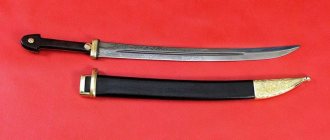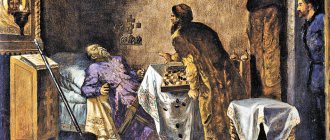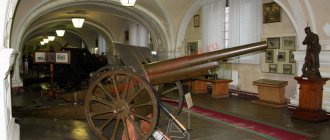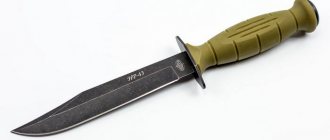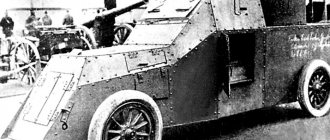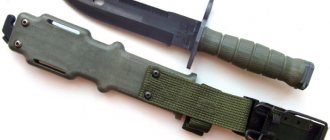History of Cossack weapons
The Cossacks have always preferred affordable and effective weapons. At the beginning of the 18th century there were no automatic weapons yet. But rifles and shotguns were of little help in close combat. Only a good blade could help in hand-to-hand combat.
In those days, there was a favorite saying by many: “The bullet is stupid, the bayonet is great.” The Cossacks had to arm themselves at their own expense. For this reason, captured items were very successful with them. The Cossack troops did not have any standards of weapons.
And mostly they had daggers obtained in battles with the Turks and Circassians. And those products that gunsmiths made were very similar to Persian and Ottoman blades. The most popular were Kama and Bebut.
The famous Terek Cossacks, Tula and Zlatoust gunsmiths made a great contribution to the development of domestic edged weapons. Local craftsmen gave a good impetus to the development of weapons skills.
Blackening, carving, and filigree were used to make blades. The products of different gunsmiths differed from each other. The finishing methods were very different. For this reason, the blades of the Cossacks were very different from each other.
In 1840 the decision was made to stop this diversity. The first standard model of the dagger was introduced into the Cossack military formations. The design of the single blade was double-edged with a figured handle. This model was used by Cossack cavalry and artillery.
Cossack dagger.
Versions of occurrence
According to legend, the Don and Kuban Cossacks did not all have edged weapons. It was awarded only to those who distinguished themselves by special feats. By looking at a Cossack's dagger, one could determine the status of its owner. There is a version that the daggers were made from pieces of a broken saber.
Who are Plastuns?
Plastuns were called foot detachments of Cossacks, which were essentially an analogue of modern special forces units. Such detachments were staffed from the Kuban Cossack army. They were already famous for their exploits, but the Plastuns were the best of the best. This was the name given to the Cossacks who carried out reconnaissance and sabotage operations.
More examples of Cossack daggers.
Handle material
The handle was made from the following materials:
- horns;
- bones;
- gland;
- silver
The handle has a wide base, a narrow shaft ending in a pommel similar to an arch. The handle did not have a guard; it was attached to the shank of the blade with rivets.
Dagger Kama Azerbaijan.
The presence of two large rivets meant belonging to the North Caucasus and Dagestan, with three – Transcaucasia.
Decoration
There were engravings on the hilts and scabbards:
- Kama is the pride of the peoples of the Caucasus.
wooden, covered with leather and with a metal tip; - iron;
- silver
Masters put their marks. The pattern determined the area of origin and the craftsman. The scabbard was often decorated with an original ornament.
Types of short Cossack weapons
To solve many tactical problems, the Cossacks had short weapons. It was used in cases where the long one became impossible to use. Often short weapons were used with long ones, an example would be a saber and a dagger.
Knife
The blade was an additional weapon among the Caucasian Cossacks. But the Don Cossacks wore the product on their belts and used a knife as their main weapon. Among the Kuban Cossacks, the blade served economic purposes. But if necessary, the knife could be used as a weapon.
Cossack knives.
Dagger
This weapon belongs to the short type and was used by the Cossacks constantly. It was a double-edged blade made from a wedge-shaped strip of steel. The handle was made of an applied type from two plates of wood.
The protruding parts of the blade served as a stop when transitioning to the shank. There were two types of daggers: straight kama and curved bebut. The first product was an element of the uniform of the Caucasian Cossacks. The second blade was the favorite knife of the Plastun Cossacks.
Examples of daggers.
Slingshot
It was made from the fork of a strong tree. Dogwood could be such a material. The product had two pointed edges and an apple-shaped thickening at the end of the handle with a hole for a lanyard. The slingshot was used with two hands.
It allowed the Cossack to effectively defend and attack the enemy. Nails were sometimes driven into the sharp ends. With such a weapon it was possible to neutralize the enemy and not inflict mortal wounds on him. This could be necessary if necessary to deliver him alive.
Cossack slingshot.
Extinguished
This weapon was a metal weight tied to a rope with a loop through which the hand was threaded. The weight was often a piece of lead inserted into a small leather belt. Less commonly, it could be a stone in a piece of matter. The weapons were easily accessible and were used by the Cossacks in urban environments.
Extinguished.
Shoemaker
An iron pointed pin wrapped on one side with a rag. It reached 40 cm in length. The product was worn behind the top of a boot and could be used as a throwing weapon. But more often it was a weapon of last chance. The shoemaker was made from a broken bayonet.
Boot knife.
Whip
It was a leather whip with a wooden handle. It reached a length of 60-70 cm when unfolded. At the end of the whip there was a pocket into which a metal bullet was placed. The whip was attached to the hand through a ring or directly to a strap, which was attached to a wooden handle.
Weapons were used when it was necessary to teach a person a lesson, not to kill him. The whip was used to disperse demonstrations and punish unscrupulous traders and petty swindlers. In general, the Cossacks used many different things as weapons.
Cossack whip.
Symbol of dignity
In the old days, Caucasian men carried a dagger almost constantly, starting from adolescence. The product was used as a combat and hunting item. But they could also solve various economic problems.
The kama dagger was an indispensable attribute of the national costume. The highlanders carried out all their tasks with a dagger in their belts, even when going to bed they placed it at the head of the bed. Thus, man was always armed. The dagger was a man's asset, and it could always be protected.
Evolution of the dagger
The main short weapon of the Kuban Cossack was the dagger. Its history is very ancient and is connected with the ancient Scythian akinak. But there is an opinion that the dagger is the ancestor of bone products. But it’s hard to argue here; any blade is a descendant of an ancient bone knife.
Thanks to its weight proportions and successful design, the dagger took the place of the main short auxiliary weapon among the Cossacks. The blade has survived many generations and is still in use today. As already noted, there were two types of daggers.
The straight blade of the kama was double-edged and was a cutting and piercing object. A correctly executed dagger has a thickening in the front part - elman. Thanks to it, the penetrating ability of the product increases.
The simple and universal form of the dagger allowed it to remain the uniform of the Cossacks to this day.
Officially, the Kuban dagger became an element of the form in 1840. But in reality it was used up to this point.
The Cossacks really liked the product of the Black Sea Cossack Army. It had a good handle. It could be used with a special grip, in which the end of the handle rested on the palm and the handle itself was passed between the middle and ring fingers.
Cossack daggers.
Kama dagger
The blade of the product was a spear- or wedge-shaped steel strip. In length it reached from 30 to 70 cm. The sharpening of the blade was double-edged, there was an elman, the handle was made of two cheeks riveted to the shank.
The material could be animal horns or wood; in rare cases, steel was used. Three rivets were used for fastening. The outer two of which looked like hemispheres. Thanks to them, the handle was held tightly in the hand.
Expert opinion
Konstantin
Since childhood, I have been interested in knives and everything connected with them. I bring the accumulated knowledge to the masses. I make knives myself. I take criticism positively, but I also like to argue.
An interesting fact is that the Caucasian dagger has a critical point, which is located in the center of the handle at the place where the second rivet is attached. If you deliver a piercing blow and hold the dagger flat, then due to the weight of the wounded, the product breaks in the area of the handle. Just in the exact place where the second fastener is riveted.
A Cossack received his first dagger at the age of 3-5 years. Basically it was a gift from the oldest ancestor. From that moment on, the dagger became the Cossack's companion until his death. The older generation passed on experience to the newcomers.
They showed how to properly sneak up on an enemy, how to evade attacks, or how to move correctly during a fight. The remaining techniques were developed with experience. When the Cossack went to bed, he hung the blade at the head of the bed.
Kama dagger.
Features of the knife
Blade with a straight and reinforced heel. The valleys are located in the center. The handle comes from:
- hornbeam;
- Karelian birch.
The top is covered with materials such as:
- brass;
- cupronickel
The corrugated rounded handle has a lowered metal back. Small samples of the butt are 27 cm long, medium ones are up to 35 cm.
The blade is made of the following steel:
- damask;
- damask;
- any steel with a hardness of 60 - 64 HRC for blade sharpness.
Working area up to 25 cm. Miniature models have a blade up to 20 cm. They are produced by:
- Skovorodikhin's workshop;
- Don Arms Factory;
- Barinov Factory.
Bebut dagger
This is a double-edged, curved dagger. Bebut was a favorite product among the Plastun Cossacks. The curved shape allows for more devastating stabbing and slashing blows. But the important point was the relationship of the dagger with the proportions of the human body.
Also, the blow had to be performed at a strict angle.
The technique of owning a bebut requires a lot of time and effort. A direct poke with such a blade is almost impossible to deliver. Requires special skill.
The dagger accompanied its owner throughout his life. It helped its owner learn the nature of cold iron and the principles of weapon ownership. But the Cossack could have several blades that were obtained on the battlefield.
Cossack blade - bebut.
Characteristics of the Plastun knife
Main parameters:
- length – 300-340;
- blade length – 200 – 220;
- handle – 110 – 130;
- butt thickness – 0.27-0.52;
- blade width – 27 – 30;
- type of steel - Damascus;
- blade hardness – 59-61HRC.
The sizes in current production change, but they all have the same grade of steel.
Damascus steel knife
Damascus steel is a variety with obvious irregularities on the surface. There are two types:
- welding;
- refined.
This material is popular all over the world. Its high strength has no equal.
Dagger of the Caucasian Cossack Army
Caucasian-type daggers gained wide popularity among the Cossacks in the 19th century. At that time, blades were of different types and characters. But already at the beginning of the 20th century, a decree was issued approving samples of Asian sabers and daggers.
The Cossacks had such products before. But later, as a statutory mandatory attribute, it remained only with the Caucasian Cossack Troops. One might think that daggers of the Caucasian type are an attribute exclusively of Caucasian warriors.
But this is not true, you can see many historical photographs where soldiers of the Russian Imperial Army - Cossacks - wore these daggers.
There are a lot of daggers of the Caucasian type, but by the mark you can identify a product that was used specifically in the Russian tsarist army.
Russian gunsmiths made a significant contribution to the manufacture of daggers. Even the Caucasian peoples at one time adopted some elements. To reduce the cost of production, blades were purchased from the Zlatoust Arms Factory.
The quality of these blades was assessed by army inspectors. And if the blade did not meet the standards, then it was melted down. In modern conditions, the dagger has ceased to be a weapon. But as a rare antique weapon, it firmly takes its place in collections around the world.
Modern replicas
Modern daggers are distinguished by geometry and balance. Today, such a product can be used to cut food, cut wood chips for a fire, or open a tin can. Modern replicas may have the following features:
- the presence of fullers, 1 or 2 pieces, but they have more of a decorative function;
- diamond-shaped cross-section, the product has high penetrating abilities;
- barrel-shaped handle with transverse cuts for better blade retention;
- reinforced heel improves the appearance of the product;
- a rigid sheath with a loop for attaching to a belt or two belts to secure the product on the hip.
Modern replicas of the Cossack dagger.
